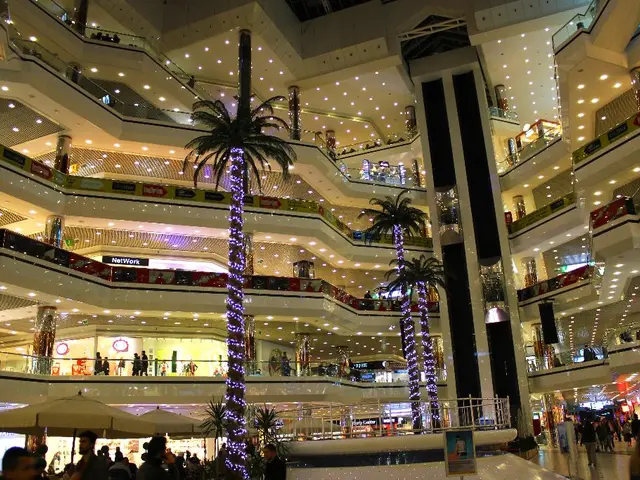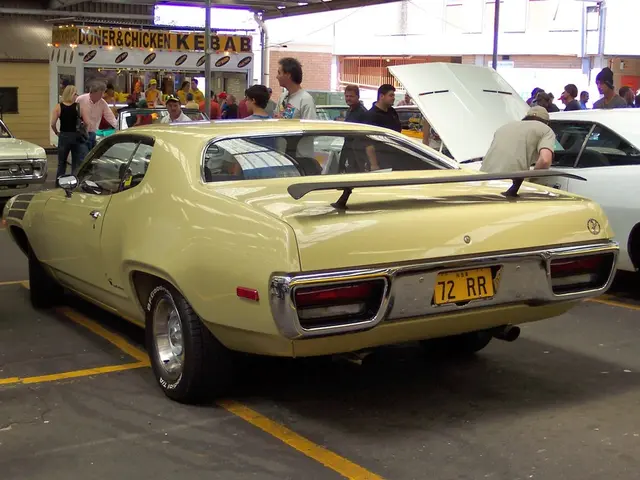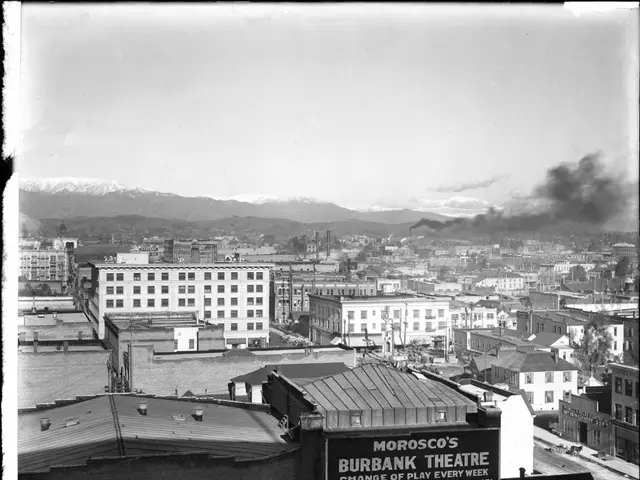Historic church relocating in Kiruna due to expansion of mines - Historic Kiruna church is relocating due to mine growth
=====================================================================================
In the heart of northern Sweden, the 113-year-old Kiruna Church, a cherished cultural monument and a symbol of the indigenous Sámi people, has been meticulously moved 5 kilometers (3 miles) from its original location. This unprecedented relocation is part of a 30-year plan to rescue significant parts of Kiruna's city center and infrastructure from the looming threat of mining-induced ground fissures [1][3][4].
A Necessary Evolution for Kiruna
The expansion of Europe's largest underground iron ore mine beneath the town has caused cracks and ground subsidence since around 2004, posing a risk of collapse in some parts of Kiruna [1]. Thousands of residents and dozens of buildings have been included in this long-term relocation strategy to ensure urban safety while the mine continues to operate [1]. The church, weighing about 670–700 tons and measuring 40 meters across, was moved at a slow pace of 500 meters per hour to maintain structural integrity throughout the journey [1][3][5].
Balancing Industrial Activity and Heritage Preservation
The Kiruna Church, renowned for its distinctive red wooden design and historical significance, serves as a testament to the commitment to preserving cultural heritage amidst environmental and industrial pressures [1][3]. The relocation project extends beyond the church, involving the careful movement of other key buildings and elements of Kiruna’s cultural landscape as the city center evolves away from mining-affected zones [1].
This unique challenge of balancing industrial activity with heritage preservation has attracted significant national and international attention [2][3]. The church's symbolic move is a poignant representation of the tension and synergy between a major industrial iron ore mine and the town's cultural identity.
A Costly yet Necessary Endeavour
The mining company LKAB, which operates the mine in Kiruna, is covering the cost of the church's move, estimated at approximately 44.5 million euros [1]. The church's relocation is just one of the 23 cultural monuments in the city of 18,000 inhabitants that have already been moved to ensure their survival [1].
As Kiruna undergoes this historic transformation, the city center is systematically shifted to prevent destruction by mining-induced ground damage. The Kiruna Church's relocation symbolises this evolution, preserving the town's historical monuments while ensuring its future viability.
References:
[1] The Local. (2021). Kiruna Church moved to new location. [online] Available at: https://www.thelocal.se/20210820/kiruna-church-moved-to-new-location
[2] The Guardian. (2018). Kiruna church moved to make way for Sweden's biggest mine. [online] Available at: https://www.theguardian.com/world/2018/may/20/kiruna-church-moved-to-make-way-for-swedens-biggest-mine
[3] BBC News. (2018). Kiruna church moved 5km to make way for mine. [online] Available at: https://www.bbc.com/news/world-europe-44215617
[4] The New York Times. (2018). The Swedish Town Moving Its Church to Save It From a Mine. [online] Available at: https://www.nytimes.com/2018/05/20/world/europe/kiruna-church-sweden-mine.html
[5] The Telegraph. (2021). Kiruna Church moved to new location. [online] Available at: https://www.telegraph.co.uk/news/2021/08/20/kiruna-church-moved-new-location/
- The scientific principles and techniques involved in relocating the Kiruna Church have been applied to various fields, enhancing the knowledge base of environmental science.
- The finance sector plays a crucial role in funding projects like Kiruna's relocation, ensuring that industries can operate sustainably while preserving historical and cultural artifacts.
- The aerospace industry can learn valuable lessons from the Kiruna Church's relocation, as it demands precision, planning, and an understanding of the impact on surrounding structures, similar to complex aerospace missions.








